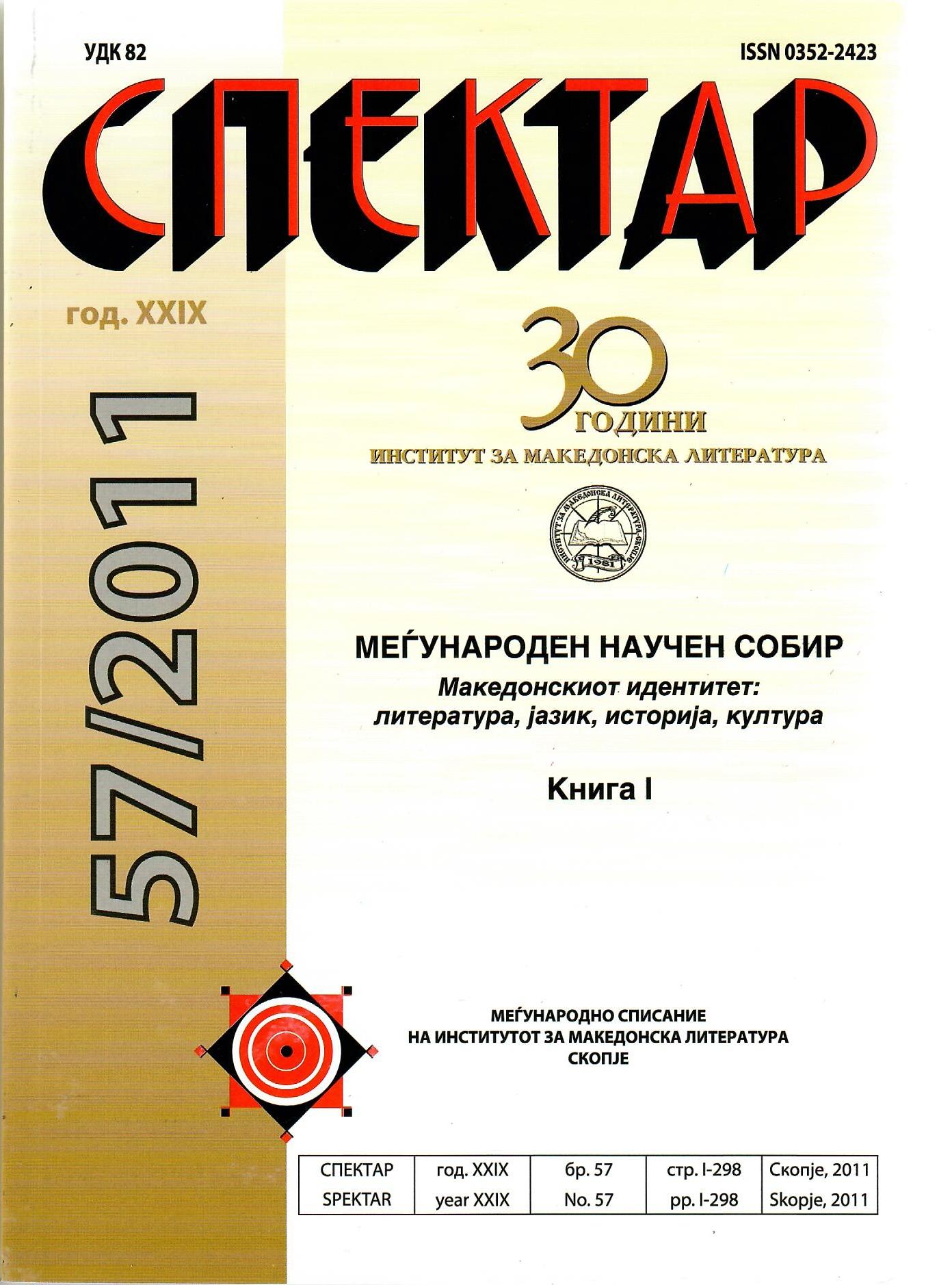ЗА НЕКОИ ФОРМИ НА МАКЕДОНСКИОТ ДЕТСКИ ФОЛКЛОР
ABOUT SOME FORMS OF THE MACEDONIAN CHILDREN'S FOLKLORE
Author(s): Bone VelichkovskiSubject(s): Customs / Folklore, Cultural Anthropology / Ethnology
Published by: Институт за македонска литература
Keywords: children's folklore; children's games; verbal forms
Summary/Abstract: Children's folklore is a multi-genre system, consisting of prose, recitative forms, poetic creations and works in forms of games and toys. In folklore is also included the creation of children themselves, as well as works created by adults, which are intended for children. This division stems from the fact that the playing, performing and rhythmic-intonation capabilities of children depend on their age. For example, in early childhood (from first birthday to about three to three and a half years of age) the emotional, motor and mental development of children entirely depend on the responsibility of the adults. In that period, the adults create lullabuys and various other works for the entertainment and amusement of small children in order to calm them down. The second part of folklore for children was created by children of middle and advanced age. These are works that are sung or spoken rhythmically and usually are songs that accompany the play. There are the so-called teasers, or brain teasers in the Macedonian language, then the counting-out games, and also various mixtures of short stories of what cannot be, for instance: Mosquito Bey was marrying / a little fly, short funny songs and prose in form of a saying, and also riddles, short stories etc. Some of them are creations by adults for children, but more of them are due to the imagination of the creative children. G. S. Vinogradov, one of the experts of the national education and pedagogy in the former Soviet Union, for the first time began to use the term "children's folklore", stressing the need of paying a special attention to the works from the children themselves, as well as to the poetry, i.e. to the little lyrical works in which adults address children with a gentle, melodious tone. Later, this kind of literature joins lullabuys (although some scholars consider them being a part of the family lyrical songs). Also in literature it is pointed out that some genres of folk literature that existed for adults have lost their primal utilitarian function and sacred meaning and in a changed, simplified version have past into the sphere of the children's folklore. Children's folklore, especially children's songs and games are a specific area of folk culture and represent a unique tool for socialization of the child. Numberless studies show their relationship with the family tradition and rituals, in which the child is organically connected. The deep and multifaceted relations with the folklore of adults in a special way reflect the structure of children's folklore, their content and thematic basis, their role and function in the life of the child and the system of poetic and other genres, the multimedia, for example, in the latest time. As a sphere of folk culture, children's folklore is relatively autonomous and has its own genre and aesthetic system's specifics. Every form of the children's folklore helps the preservation of the physical and mental health of the child, contributes to the development of its personality, in order to build its relationships with the other children and adults. More recently a separate research discipline has been set up called folklore of childhood, within which children's folklore is explored. According to the classification of the material of the Macedonian children's folklore on the basis of age-functional criteria it is divided into two groups. In the first group an adult person is addressing the smallest children with lullabuys, tongue twisters, etc. In the second group a special attention is paid to the expression of the children themselves with their own folk forms as independent artists in the spirit of the folk tradition. Moreover, in this paper are also put forward some issues about some modern forms of children's folklore, its semantic, structural and functional aspects, which are based on the child's spoken language as a phenomenon through which is perceived the rich cognitive creative ability for the formation of children's worldview, that is, through the analysis of narrative and other kinds of texts. Children's folklore is observed as a syncretic form of spiritual culture, as unstoppable creative force, which is expressed through all the phases and states of mind that follow the child, ranging from discomfort, fear, play and humor, which depends on the artistic orientation and genre preferences of the children of different ages, and which reflects the complex process of socialization and their own self-perfection.
Journal: Спектар
- Issue Year: 2011
- Issue No: 57
- Page Range: 74-94
- Page Count: 21
- Language: Macedonian

